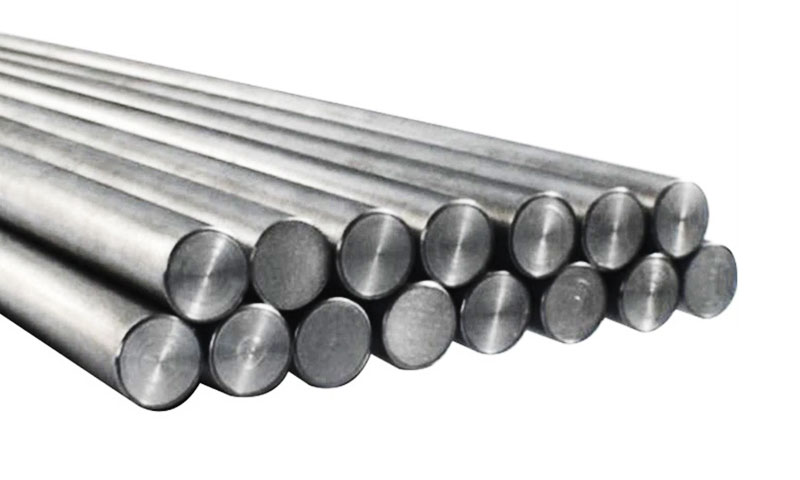1. Введение
НАС S20910 (commonly marketed as Атронный 50 или XM-19) and UNS S21800 (commonly marketed as Атронный 60 или Сплав 218) are advanced austenitic нержавеющие стали engineered for demanding service.
Both deliver better performance than conventional 300-series grades, but they are optimized for different priorities:
- S20910 (Атронный 50) является а коррозионная устойчивость, nitrogen-strengthened austenitic stainless optimized for high corrosion resistance (including sour service), Хорошая сила, Отличная прочность (including cryogenic), и хорошая сварка.
It is often specified where resistance to pitting, SCC and low-temperature toughness are required together with reasonable strength. - S21800 (Атронный 60) is formulated primarily for wear and galling resistance while retaining corrosion resistance typical of austenitics.
It contains high silicon and manganese for tribological performance and is selected where sliding contact, нанесенный, and high wear are the dominant failure modes.
This article compares composition, mechanical and corrosion behaviour, изготовление, and real-world application trade-offs so you can select the right alloy for a specific component or environment.
2. What Is UNS S20910 (Атронный 50)
НАС S20910, широко известен как Атронный 50 или XM-19, является а high-performance nitrogen-strengthened austenitic stainless steel.
It is engineered to deliver a combination of Отличная коррозионная стойкость, Высокая сила, пластичность, и выносливость, including at cryogenic temperatures.
These attributes make it well-suited for demanding industrial applications such as chemical processing, Морская среда, and sour-service conditions.
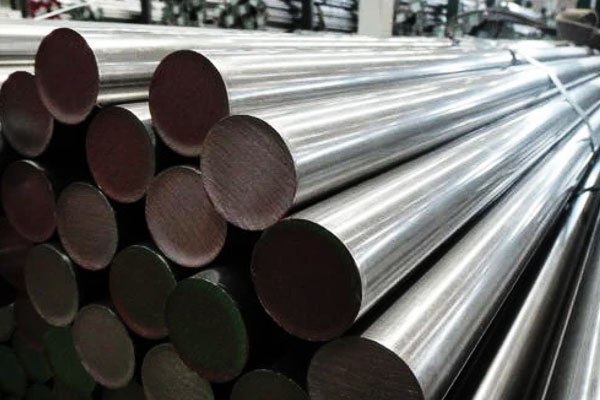
Key material designations and specifications включать:
- ASTM A276 / A479 (as XM-19)
- UNS S20910
- ОТ 1.3964
Primary characteristics of UNS S20910 (Атронный 50):
- Коррозионная стойкость: Enhanced by increased chromium, молибден, и содержание азота; highly resistant to pitting and crevice corrosion in chloride environments.
- Механическая прочность: Stronger than conventional 300-series stainless steels, with excellent yield and tensile properties.
- Ductility and toughness: Maintains performance at both elevated and cryogenic temperatures.
- Fabrication and weldability: Can be machined, сформировано, and welded with conventional techniques; solution annealing restores ductility after cold working.
- Nitrogen-strengthened: Nitrogen addition increases yield strength and contributes to pitting resistance without compromising austenitic ductility.
- Application suitability: Listed in NACE MR0175 for sour service, suitable for marine hardware, ХИМИЧЕСКОЕ ОБОРУДОВАНИЕ ОБОРУДОВАНИЕ, компоненты давления, and structural applications requiring corrosion resistance and mechanical performance.
3. What Is UNS S21800 (Атронный 60)
НАС S21800, обычно называют как Атронный 60 или Сплав 218, является а high-performance austenitic stainless steel designed primarily for wear and galling resistance, while maintaining good corrosion performance typical of austenitics.
Its specialized composition makes it ideal for applications where sliding contact, клейкий износ, and high surface stress are primary concerns.
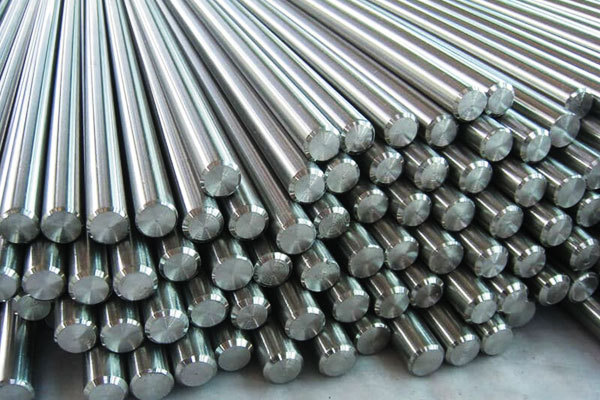
Key material designations and specifications include:
- ASTM A276 / A479 (for bars, стержни, and other wrought forms)
- UNS S21800
Primary characteristics of UNS S21800 (Атронный 60):
- Wear and galling resistance: Elevated manganese and silicon content, combined with a nitrogen-strengthened austenitic matrix, provides superior resistance to нанесенный, клейкий износ, and surface seizure.
- Коррозионная стойкость: While not as corrosion-resistant as Nitronic 50 in highly aggressive chloride environments, он предлагает Хорошая общая коррозионная стойкость suitable for moderate chemical and marine exposures.
- Механическая прочность: Exhibits high strength in both annealed and cold-worked conditions, with excellent surface hardness after work hardening.
- Fabrication and welding: Can be welded and fabricated using standard methods, though its higher silicon and manganese content may require adjustments in welding filler selection and machining parameters.
- Application suitability: Обычно используется для клапан стеблей, крепеж, насосные валы, bearing surfaces, and other components subjected to repeated sliding contact or wear-intensive service.
4. Typical Chemical Compositions and Alloying Differences
A critical factor distinguishing UNS S20910 (Атронный 50) and UNS S21800 (Атронный 60) is their alloying strategy, which directly influences corrosion resistance, механическая прочность, wear behavior, and fabrication characteristics.
While both are nitrogen-strengthened austenitic stainless steels, they are optimized for different service priorities.
Representative Chemical Compositions (wt%) and Performance Role
| Элемент | UNS S20910 (Атронный 50) | UNS S21800 (Атронный 60) | Key Role in Performance |
| Углерод (В) | ≤ 0.06 | ≤ 0.10 | Controls strength, limits carbide formation; low C improves corrosion resistance and weldability |
| Хром (Герметичный) | 20–23 | 16–18 | Primary contributor to corrosion resistance; higher Cr in S20910 increases PREN |
| Никель (В) | 11–14 | 8–9 | Остенит стабилизатор; повышает прочность и пластичность; higher Ni in S20910 supports cryogenic performance |
| Марганец (Мнжен) | 5–6 | 8–9 | Increases work-hardening and galling resistance; high Mn in S21800 aids wear performance |
| Кремний (И) | ≤ 0.5 | 3.5–4.5 | Improves oxidation and wear resistance; higher Si in S21800 supports galling resistance |
| Молибден (МО) | 1.5–3 | Не указан / след | Увеличение устойчивости к питтинге и расщелинам; present in S20910 to resist chlorides |
| Азот (Не) | 0.10–0.20 | 0.08–0.18 | Strengthens austenitic matrix; улучшает коррозионную стойкость; supports wear resistance in S21800 |
| Железо (Фей) | Баланс | Баланс | Матричный элемент; balances alloying; provides basic austenitic structure |
Interpretation: S20910 emphasizes Герметичный + В + МО + Не (classic austenitic corrosion alloying with nitrogen strengthening and Mo for pitting resistance).
S21800 trades some chromium and nickel for elevated silicon and manganese, which improve hardness, wear and galling resistance.
4. Mechanical Properties and Temperature Behaviour
НАС S20910 (Атронный 50) and UNS S21800 (Атронный 60) exhibit distinct mechanical profiles reflecting their alloying strategies.
Ключевые механические свойства
| Свойство | UNS S20910 (Атронный 50) | UNS S21800 (Атронный 60) | Practical Implication |
| 0.2% Предел текучести условный (МПА) | 350–420 | 320–380 | S20910 offers higher baseline strength for corrosion-critical applications; S21800 gains strength via work hardening |
| Предел прочности (МПА) | 650–750 | 600–700 | S20910 provides slightly higher ultimate strength; S21800 maintains adequate tensile strength with wear focus |
| Удлинение (%) | 30–45 | 25–40 | S20910 maintains excellent ductility; S21800 is slightly less ductile but sufficient for forming/fabrication |
| Твердость (HRB / HRC) | HRB ~85 typical annealed | HRB ~85, can be higher with work hardening | S21800’s higher Mn/Si allows superior surface hardness after cold work, enhancing galling resistance |
| Воздействие на выносливость (J at room temp) | Отличный; retains toughness at cryogenic temps (-196° C.) | Хороший; slightly lower than S20910 in cryogenic applications | S20910 preferred in low-temperature or highly dynamic loading applications |
| Elevated Temperature Performance | Good up to ~600–700°C | Reasonable; high Si improves oxidation resistance at moderate temperatures | S20910 favored for high-temperature corrosion exposure; S21800 for wear-exposed high-temperature components |
Temperature Behaviour
- Cryogenic Performance:
S20910 retains ~90% of impact energy at liquid helium temperatures, making it suitable for LNG storage, cryogenic piping, и аэрокосмические приложения.
S21800 retains reasonable toughness but is not optimized for extreme low temperatures. - Повышенная температурная производительность:
Both alloys maintain dimensional stability and strength at moderate elevated temperatures.
Nitronic 50’s Mo content provides additional resistance to high-temperature corrosion, while Nitronic 60’s high Si content improves oxidation resistance in sliding-contact applications. - Работа укрепления:
Both alloys are austenitic and work-hardening, meaning mechanical properties, especially hardness and yield strength, can be increased via cold working.
S21800 benefits most due to high Mn and Si, improving wear and galling performance.
5. Corrosion Resistance and Pitting Resistance (Древесина)
Эквивалентное число сопротивления ячеек (Древесина) is a useful indicator of resistance to chloride pitting; it’s calculated from Cr, Mo and N content (simplified form: PREN ≈ Cr + 3.3× mo + 16× n).
- Атронный 50 (S20910) — higher Cr, Mo and N yield PREN values in the low-to-mid 30s (typical engineering figure ≈ ~34).
That places it well above 316L (PREN ≈ 20–25) and makes it suitable for many chloride-bearing environments, including some marine and sour service (it is commonly accepted for NACE MR0175 qualifying in many conditions—verify certificate). - Атронный 60 (S21800) — because Mo is typically absent and Cr is lower, PREN is ниже (typical mid-20s or less depending on exact chemistry).
While S21800 resists general corrosion reasonably well, это нет chosen primarily for pitting resistance; вместо, it is used where galling and wear are primary concerns.
6. Носить, galling and tribological performance
- Атронный 60 (S21800) спроектирован для galling resistance and sliding wear.
High silicon and manganese, combined with work-hardening capacity, produce a surface that resists adhesive wear and metal-to-metal seizure.
Typical uses include valve stems, места, крепеж, and pump components where repeated sliding contact occurs. - Атронный 50 (S20910) предложения Хорошая износостойкость, but its primary strengths are corrosion resistance and toughness rather than optimized galling resistance.
It is sometimes used in wear applications where corrosion control is also required, but for extreme galling environments S21800 usually outperforms it.
7. Изготовление, welding and heat-treatment considerations
Сварка
- Both alloys are сварная сварка by standard processes (ТИГ, МНЕ, Смау).
- S20910 (higher Ni/N) is highly weldable and retains corrosion resistance after welding when proper procedures and filler metals are used.
Low carbon and stabilized practices can minimize sensitization risk. - S21800 requires attention to heat input and filler selection because its high Si and Mn can influence weld metal composition; preheat/post-weld heat treatment practices depend on component size and code requirements.
Forming and machining
- Both are работа в работе austenitics; S21800’s higher Si/Mn can make cutting more challenging—tooling and speeds need adjustment.
S20910 in solution-annealed condition is generally easier to machine/form.
Термическая обработка
- These are austentic alloys—strength is primarily from cold working and alloying; full hardening by quench/tempering is not applicable.
Solution annealing can restore ductility and corrosion resistance (typical anneal ~1000–1100 °C followed by rapid cooling).
Hydrogen/sour service
- S20910’s chemistry and listing in some sour-service guidance make it suitable for H₂S environments (verify NACE/ISO certifications).
For sour service weld procedures and hardness limits (HRC thresholds) are normally enforced.
8. Applications of UNS S20910 vs UNS S21800 Austenitic Stainless Steel
The distinct alloying strategies, механические свойства, and corrosion/wear characteristics of UNS S20910 (Атронный 50) и UNS S21800 (Атронный 60) define their suitability across different industrial applications.
Applications of UNS S20910 (Атронный 50)
UNS S20910 is engineered for высокая коррозионная стойкость, Отличная прочность, и хорошая сварка, making it ideal for environments where both corrosion and mechanical performance имеют решающее значение.
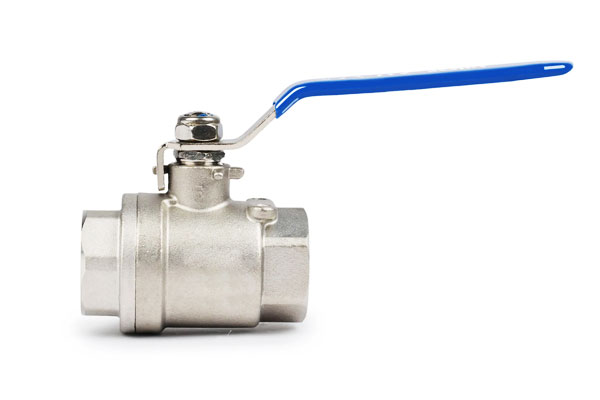
| Промышленность / Сектор | Типичные приложения | Key Performance Requirement |
| Морской пехотинец & Оффшор | Seawater fittings, насосные валы, крепеж, клапаны | Высокая сопротивление хлорида, prevention of pitting/crevice corrosion |
| Химический & Процесс оборудования | Теплообменники, реакторы, трубопровод, бак | Resistance to acids, хлориды, and sour service (H₂S Exposure) |
| Криогенные применения | LNG storage and transfer piping, cryogenic valves | Retains toughness at extremely low temperatures (-196° C.) |
| Аэрокосмическая промышленность | Fuel lines, cryogenic components | Высокая сила, коррозионная стойкость, low-temperature ductility |
| Энергия & Власть | Boiler components, turbine parts in corrosive environments | Combination of corrosion resistance and mechanical integrity |
Applications of UNS S21800 (Атронный 60)
UNS S21800 is optimized for galling and wear resistance while maintaining reasonable corrosion performance.
It is ideal for mechanical components subjected to sliding, adhesive contact, or high surface stress.
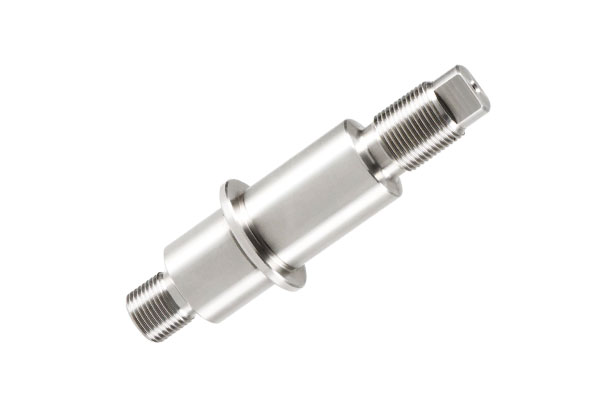
| Промышленность / Сектор | Типичные приложения | Key Performance Requirement |
| Клапан & Pump Industry | Клапан стеблей, места, насосные валы, крепеж | High resistance to galling, скользящая одежда, adhesive seizure |
| Промышленная техника | Подшипники, втулки, high-wear mating surfaces | Поверхностная твердость, work-hardening capability, низкое трение |
| Автомобильная промышленность & Тяжелое оборудование | Крепеж, high-wear components, приводы | Galling prevention, durability under repeated sliding or contact |
| Морские приложения | Deck hardware, mechanical joints | Moderate corrosion resistance with high wear/galling protection |
| Химическая обработка | Mixer shafts, agitator blades | Wear-resistant components where moderate corrosion occurs |
Application Guidance
- Choose UNS S20910 when the primary concern is corrosion resistance in aggressive or sour environments, especially when toughness, сварка, and low-temperature performance are required.
- Choose UNS S21800 when нанесенный, носить, and sliding contact dominate failure modes, even if corrosion resistance is less critical.
- In complex assemblies, hybrid designs can leverage both alloys—using S20910 for corrosion-critical parts and S21800 for high-wear mating surfaces.
Surface engineering such as покрытия, нитринг, or PVD treatments can further extend service life when combined with these alloys.
9. Direct Comparison Table: UNS S20910 vs UNS S21800
| Особенность / Свойство | UNS S20910 (Атронный 50) | UNS S21800 (Атронный 60) | Practical Implication |
| Primary Focus | Коррозионная стойкость, стойкость | Wear/galling resistance, поверхностная твердость | Guides selection based on environment and mechanical stress |
| Предел текучести условный (МПА) | 350–420 | 320–380 | S20910 has higher baseline strength; S21800 can achieve higher surface hardness via cold work |
| Предел прочности (МПА) | 650–750 | 600–700 | S20910 slightly higher; S21800 optimized for wear resistance rather than ultimate strength |
| Удлинение (%) | 30–45 | 25–40 | S20910 more ductile; S21800 slightly less but adequate for fabrication |
| Твердость (HRB / HRC) | HRB ~85 typical annealed | HRB ~85, can increase with work hardening | S21800 better for galling and surface wear applications |
| Воздействие на выносливость | Отличный; retains cryogenic performance | Хороший; lower at cryogenic temperatures | S20910 preferred in low-temperature or dynamic loading environments |
| Коррозионная стойкость | Очень высоко | Умеренный | Guides alloy choice in chemical, морской пехотинец, or sour-service applications |
| Носить / Galling Resistance | Умеренный | Очень высоко | S21800 is the preferred option for moving parts, клапан стеблей, и крепежные |
| Изготовление & Сварка | Отличный; solution annealed or strain-hardened | Хороший; requires consideration for welding filler and machining parameters | S20910 easier to fabricate in complex geometries; S21800 may require tooling adjustments |
| Максимальная температура обслуживания | ~900°C | ~750°C | S20910 suitable for higher temperature corrosion exposure; S21800 for wear-exposed moderate temperatures |
| Древесина (Эквивалентное число сопротивления ячеек) | ~34 | ~23.4 | S20910 provides superior resistance to pitting and crevice corrosion, особенно в |
10. Заключение
НАС S20910 против S21800 are complementary alloys within the Nitronic family.
Pick S20910 where corrosion resistance (especially pitting/crevice and sour service) plus toughness and weldability are paramount.
Pick S21800 where galling and wear dominate and corrosion is a secondary concern.
In many real applications the optimum solution is a combination—design the system so each part sees the alloy best suited to its dominant failure mode, or apply surface engineering to extend service life.
Часто задаваемые вопросы
Are UNS S20910 and S21800 magnetic?
No—both are fully austenitic (or near-fully austenitic) в отожженном состоянии, with magnetic permeability <1.005 (ASTM A342). Cold working may induce weak magnetism, but this is reversible via annealing.
Can I weld S21800 with standard stainless fillers?
Да, but select fillers and procedures to accommodate S21800’s high Si/Mn chemistry—consult welding procedure specifications and filler supplier guidance.
Which alloy resists sulfide stress cracking (SSC)?
S20910 is commonly accepted for many SSC environments and is used in NACE-subject applications; verify specific NACE/ISO certification and hardness limits.
Is Nitronic 60 (S21800) suitable for seawater?
It has reasonable general corrosion resistance in seawater but lacks the pitting resistance of Nitronic 50 or Mo-bearing grades; if seawater pitting is critical, choose S20910 or a higher PREN alloy.
Can either alloy be heat-treated to increase strength?
These austenitic alloys gain strength mainly by холодная работа и легировать; conventional quench/temper treatments are not used to significantly increase strength. Solution annealing restores ductility/corrosion resistance.
